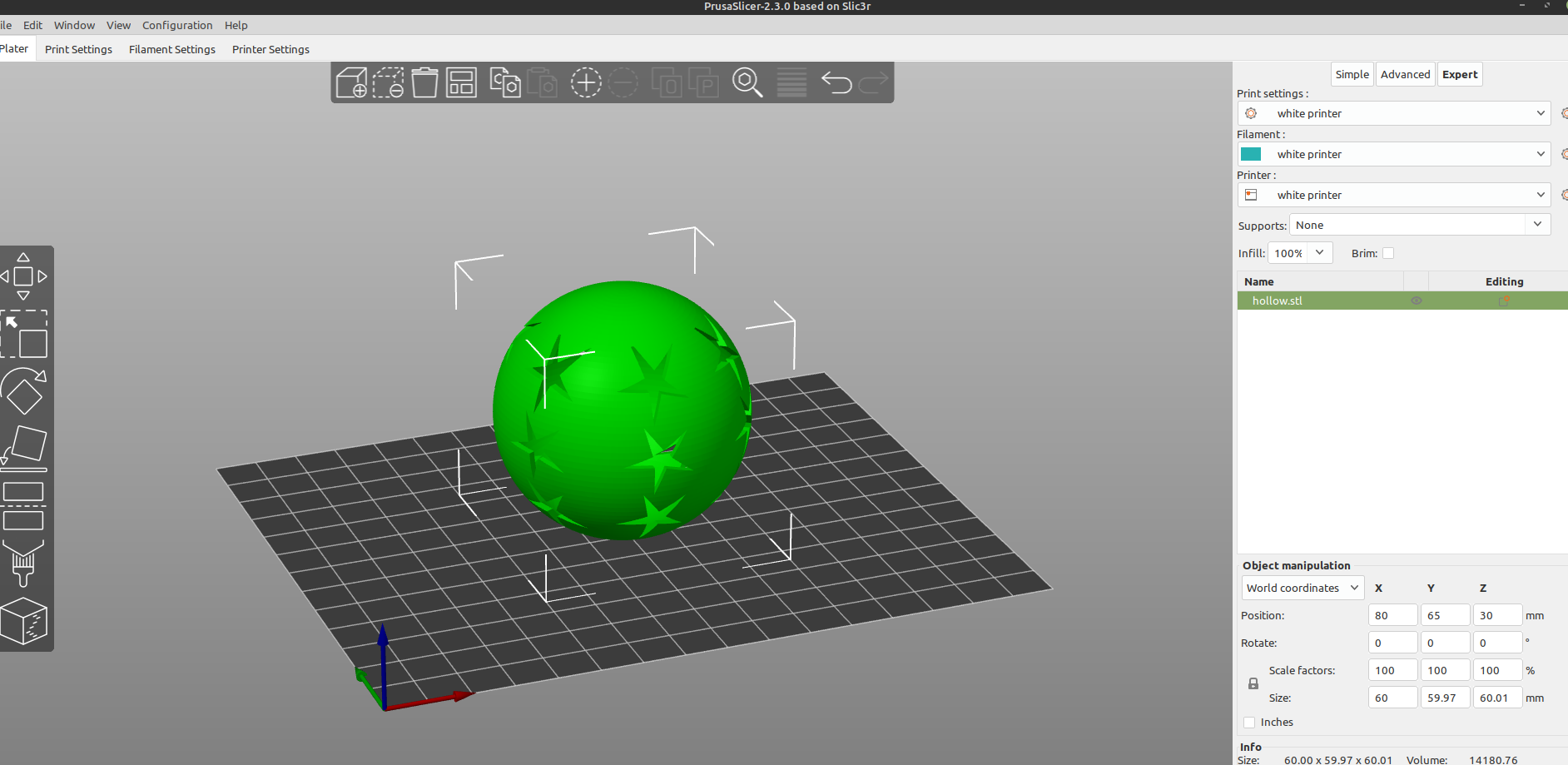

Translation means moving an object by some amount along the x, y, and z axis. There’s only four basic ways to transform a shape: translating (moving), mirroring (reflecting), scaling (stretching), and rotating. The terminology is borrowed from linear algebra, which is the math behind most 3D modeling, so don’t be weirded out by it. Transformation is just a fancy way of saying moving and stretching something. What if one of the radius was zero? Well, we’d get a cone instead by doing: cylinder(h = 40, r1 = 20, r2 = 0) Īnd like the cube, if you’d like to center it, all you have to do is add another parameter called ‘center’: cylinder(h = 40, r = 20, center = true) Ī bit harder, but still grade school stuff. If you don’t want to specify the radius twice, we can do this instead: cylinder(h = 40, r = 20) Why is 20 repeated twice? It’s because there’s the radius of the top and bottom circles.

Notice that unlike the cube, the parameters aren’t in a vector, because each of the numbers don’t correspond to the x, y, and z axis. This gives us a cylinder of height 10, and a radius of 20. The cylinder is a bit more complicated, but not by much. Notice that it’s centered at the origin already, unlike the cube. That gives you a sphere with a radius of 20. If you’d like a centered cube, that’s also pretty easy: cube(, center = true) In OpenSCAD if you refer something to be done along the x, y, and z directions, it will likely be in a vector, which is represented by numbers in brackets, like You declare it with: cube() ĭon’t forget the semicolon! Now, there’s a cube with length 10, width 20, and height 15–each corresponding to each of the x, y, and z axis directions. These are the cube, the sphere, and the cylinder. There are only three basic 3D shapes you start with, and from these, you can make most any other shape. After we do a quick run down of the 10 things, we’ll combine them to make a bishop chess piece. So what are the 10 things you need to know? They are in 3 simple categories: shapes (cube, sphere, cylinder), transforms (translate, scale, rotate, mirror), and CSG operations (union, difference, intersection).Īs a result, all you do in OpenSCAD is declare shapes, change them with transforms, and combine them with set operations.
OPENSCAD RECTANGLE FREE
Lastly, unlike many 3D modeling or CAD programs, it’s entirely free! Not just free of charge, but it’s open source with a vibrant community. Holes in the 3D model makes it indigestible by slicing programs like skeinforge and slic3r, and hence, unprintable. In addition, it’s a 3D modeling program based on constructive solid geometry (CSG), which means you’ll never make models with holes in the resulting 3D model mesh (however, you can still make bad models in another way). If you’ve ever written a simple blog post or email in HTML, you can handle OpenSCAD. “I’m not a programmer, you say!” Actually, OpenSCAD is a declarative language, like HTML. Unlike most other 3D modeling programs like Blender, Sketchup, AutoCAD, or Solidworks, it’s really easy to get started in OpenSCAD.Īnother difference is that you write a programming language to do your 3D modeling. But unlike most 3D modeling programs, there are only 10 things you need to know in order to be dangerous in OpenSCAD. OpenSCAD is a program used to make 3D models.


 0 kommentar(er)
0 kommentar(er)
